Whether you want to brand your start-up, are looking for a new logo design, or want to completely revamp your brand, your first step should be writing a branding brief.
Building a successful brand takes sweat, determination, and hard work. Especially in the age of social media. Nowadays, brands are struggling to get visibility on social media platforms, since people view branded content as spam, and they gravitate towards those who started producing content out of passion. These folks populate the trending space on Youtube, Facebook, and Instagram.
To get to the top, businesses need stellar branding. And every branding project starts with a killer branding brief. In today’s article, we are going to answer all your burning branding brief questions:
- What Is a Brand Brief?
- Why a Branding Brief Is Important
- Differences Between Branding Briefs and Creative Briefs
- How to Write a Winning Brand Brief That Skyrockets Your Business
- Branding Brief Examples To Keep You Inspired
- Try Out Xara’s Brand Brief Templates
What Is a Brand Brief?
A brand brief sums up what your brand is and where it’s going. It’s a useful brand document for employees, freelancers, and stakeholders alike. Now, what is included in a brief for branding?
- Brand vision
- Short description of your business
- Brand strategy
- Target audience
- Competitors
- Competitive advantage
- Brand tone, voice
- Brand Image
- Brand Promise
- Culture
Think of the branding brief as a visual map of your brand. The brief sets the agenda for who your brand is now and how you want it to develop in the future. This document should reveal who your brand is, what it stands for and where it’s going.
Let’s see what are the uses of a branding brief.
Why a Branding Brief Is Important
I bet some of you are wondering what’s the use of a brand brief when you already have a brand style guide and are well aware of your strategy.
Glad to clear the air.
The greatest brands of all time managed to climb to the top and stay there due to their commitment to the brand’s values and mission. But they aren’t wizards. Rather, they relied on tools and documents to help them stay organized and consistent with their brand.
One of those magic documents is the brand brief. Here’s why you shouldn’t underestimate the value of a brand brief:
1. Makes It Easy to Familiarize New Employees With the Brand’s Identity and Strategy

Photo by Priscilla Du Preez on Unsplash
When new employees join your company, they should be introduced to the company’s culture and branding strategy from the get-go.
The more time you wait to familiarize them with the brand’s identity, the more you risk that employees form misconceptions regarding the brand. This puts brand consistency and perception in jeopardy.
A branding brief lowers the chances of jeopardizing the brand’s consistency or identity.
2. Ensures Brand Consistency Every Step of The Way

Photo by Clay Banks on Unsplash
Consistency. The holy grail of successful branding, yet the hardest pinnacle to get. If you want to build a remarkable brand, aim towards keeping a consistent look, personality, culture, and voice.
And what better way of doing this than by keeping a brand brief in handy?
Marketers, designers, and freelancers – should all have access to the branding brief. Easy access to the branding brief and regular meetings discussing the branding process ensures that everyone stays consistent.
P.S: Branding briefs should be comprehensive, yet not too packed with information. Their purpose is to guide stakeholders or team members (marketers, content writers, designers), not drain them of creative juice.
3. Enhances Collaboration Between Team Members

With so many people involved in building and maintaining the brand’s identity, it’s easy to lose sight of goals or misplace brand elements. All too often, collaboration gets messed up because some team members have one idea of the brand, while others have a different picture in mind.
That’s why a branding brief is essential. It ensures that brand elements are communicated consistently within teams, which makes collaboration flow smoothly.
4. Guides The Work of Employees

Photo by Felipe Furtado on Unsplash
A stellar brand brief should guide employees through their work, reduce time wasted looking for information and increase productivity.
Let’s say the in-house designer took some time off and one of the marketers needs some social media posts, ASAP. In a world where the branding brief isn’t on hand, they might lose hours trying to contact the designer, or searching for guidelines in all the shared storage spaces.
Or worse, they might end up producing off-branded content due to informational silos. The brand’s brief takes care of this issue.
5. Makes The Brand Guidelines Creation Process Easier
Brand guidelines are a must-have if you want to keep a consistent look for your brand.
Generally, they include brand elements such as logo, color palette, and fonts, but also elements such as voice, personality, or messaging.
To create a brand guideline, you need a deep and thorough understanding of your brand. A branding brief can help with that since it holds everything there is to know about the brand.
Differences Between Branding Briefs and Creative Briefs
The sheer amount of documents you need when building a brand can get confusing. It’s easy to get lost.
Often, people use the branding brief interchangeably with the creative brief. While both of these documents are necessary for the branding process, they aren’t built the same.
Branding briefs offer the big picture about what a brand is and isn’t, while creative briefs are project-based, and their purpose is to plan a project. It’s true that creative briefs should be built after consulting the brand brief, but they are entirely different.
Usually, the creative brief lands in the hands of the creative team in charge of said project. If, for instance, you are collaborating with a design agency to redesign your logo, then you will send them a creative brief so they can get a better picture of the brand & your expectations for the logo redesign.
What does a creative brief include, you ask? Here are the general components of this type of brief:
- A description of your company.
- A summary of the project.
- A summary of the goals you aim to achieve with this project.
- Target audience report.
- An outline of the deliverables you need from the creative team.
- A competitive analysis report.
- Brand style elements, such as brand promise, colors, fonts, and brand tone.
- Your budget & deadlines.
- A list of the stakeholders involved in the project.
How to Write a Successful Brand Brief That Skyrockets Your Business
1. Start With the “WHY”
In his prominent TED Talk, entitled “How great leaders inspire action”, Simon Sinek argues that while many business owners and entrepreneurs know the “what” and the “how” of their business, few are aware of the “why”.
Even though the “why’ should be the first question you ask yourself. No matter if you build a brand, a career, or a life.
The “why” is our compass.
Since it’s such an essential part of the branding process, it naturally follows that the branding brief should start with the why of your brand.
When you think about this, think about the brand’s core values and beliefs, as well as about the factors that motivate your target audience. This should lead you to the brand’s vision: a statement that summarizes what your brand aspires to achieve. It generally taps into a long-term goal.
For instance, Google’s brand vision is to “To organize the world’s information and make it universally accessible and useful.” Ultimately, this is what gives purpose to the organization.
2. Define Your Business
Any brand brief starts with an introduction of your business. And there are a few questions you should answer thoroughly when you write this section.
What products or services does your business provide? What pain point is your business solving? How does your business solve the customers’ pain points? What do you want to achieve with this brand offering? What values guide your brand?
These questions will lead you to the brand’s mission, values, and offering.
As you may well know, the entire branding process hangs on these questions. So you need to nail this section, as it will inspire any further creative or design brief you produce.
3. Describe The Target Audience
Brands such as Google, Apple, and Dove gained success because they are constantly attuned to and aware of their target audience.
After all, the target market builds your brand’s perception and without a clear image of your customer base, you might end up barking at the wrong tree.
And your brand will suffer as a consequence.
Thus, any stellar brand brief should include a brand persona report. This report should include elements such as demographic details (age, location, education, income), motivations, pain points, and unique attributes.
P.S: Include multiple personas in your report. Your customer base is, most likely, diverse in their preferences and motivation. This way, you will cover all your bases when you create marketing materials or brand assets.
4. Hash Down the Brand Promise
Alright, you’ve defined your customer base. Think of these people. They expect something from your brand – be it a product offering, a feeling, or a moral promise.
And you have to deliver, on their terms.
Customer expectations and motivation should not only guide your product development but also all your branding and marketing efforts. Content is king, and to rank at the top and build a strong brand, you have to keep your brand promise in any piece of content you produce.
Why do customers choose your brand? List every single reason you can come up with and the WHY behind it.
Then, craft the brand promise. But make sure the messaging is not boring and general. You want a brand promise that appeals to your brand’s target audience, something that makes them return to your brand time and time again.
Your brand’s promise should be bold, unique, and true to your business and product offering. But how can you write an unforgettable brand promise? Here are a few tips:
- Include the brand USP.
- Make sure your promise is measurable.
The best brand promises we’ve seen take into account customers’ expectations, motivations, and values.
An example is H&M, as their brand promise revolves around sustainability in fashion: “Looking good should do good too. That’s what H&M Conscious is all about – it’s our promise to bring you more fashion choices that are good for people, the planet and your wallet.”
While H&M has an awesome brand promise, a recent expose revealed greenwashing practices. They broke their brand promise. This move has dire consequences on the brand’s reputation and it undermines brand loyalty and trust.
So, don’t make promises you can’t keep.
5. Outline The Brand Strategy
The brand brief is a guideline for employees and stakeholders. And since every project or campaign you run should be rooted in the strategy plan, it’s wise to include the branding strategy in your brief.
This way, team members and collaborators will have an easier time coming up with project ideas that align with the brand. It’s a simple method of preventing any errors.
If, for example, the marketing team wants to create a new campaign to promote a new product, they can simply check the branding brief to inform the creative brief for the campaign.
After all, a successful brand brief should stand alone.
6. Describe Who You’re Up Against
If you want to stand in business and stand out, any branding process, marketing campaign, and design project needs to take into account what the competition is doing.
By keeping in touch with your competition, brands can find content gaps and unique opportunities to stand out in the target market.
That’s why a branding brief should include a brief overview of the competitive landscape. It saves a lot of time for designers, marketers, and freelancers – so they can focus their resources in the right direction.
7. Highlight The Brand’s Competitive Advantage
Once you map out your competition, it’s time to describe what makes your business stand out from the crowd.
What’s something unique that your brand offers within your niche? It could be anything – price point, a feeling, ease of use, an experience, innovation, cutting-edge technology, and so on.
Think of Apple. What makes them unique? Simplicity, elegance, quality, and ease of use. This is what makes Apple stand out. And this is what keeps the target market loyal to their products.
No other company managed to combine these elements as well as Apple.
8. Draw a Picture of the Brand’s Tone, Voice, and Messaging
A successful brand brief should stand alone.
And that means summarizing the traits of your brand: personality, tone, voice, and messaging. No need to write never-ending essays. Just hash out the important details that are relevant to the branding process.
Collaborators and team members can always consult the brand guidelines for a more in-depth look at the brand elements.
9. Lay Down Brand Imagery Elements
Any recognizable brand has a consistent image. This is crucial. As you probably already know, brand consistency makes brands stronger. It builds customer loyalty and helps people form a mental map of your brand.
To ensure brand consistency, make sure to include brand elements such as fonts, brand colors, imagery, and mock-ups in the branding brief.
10. Working Culture
Branding briefs can be used in all sorts of ways. Human resources managers can use them to hire employees, for instance. Or they can be used to onboard new employees.
That’s why a short description of the working culture can come in handy. On one hand, it can help recruiters find the right fit for your company. On the other hand, it can help employees navigate the novelty of the working environment, by giving them a compass.
Branding Brief Examples To Keep You Inspired
If you want to create a brief for branding, you want to strike a balance between too much information and too little information. The best branding briefs we’ve seen are compact, yet comprehensive.
If you’re feeling lost, don’t worry. We’ve compiled a list of the best branding brief examples we could find. Here we go
#1 Adidas
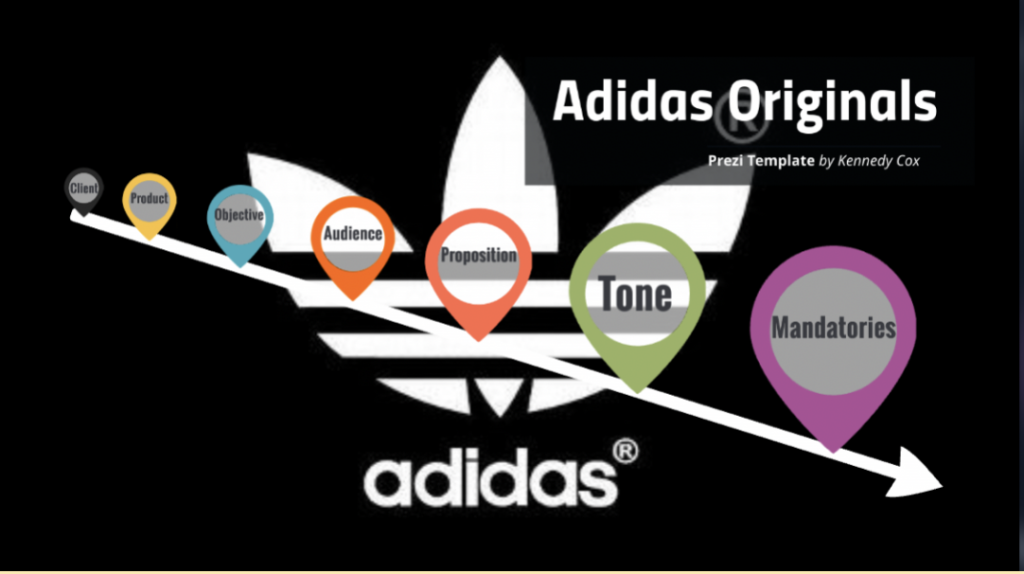
Source: Prezi
This is a great example of a brief for branding that manages to include all the relevant information in a quick, airy and fun presentation.
Yes, this is a creative brief example, but it serves as inspiration if you want to create a brief for branding.
#2 Godiva
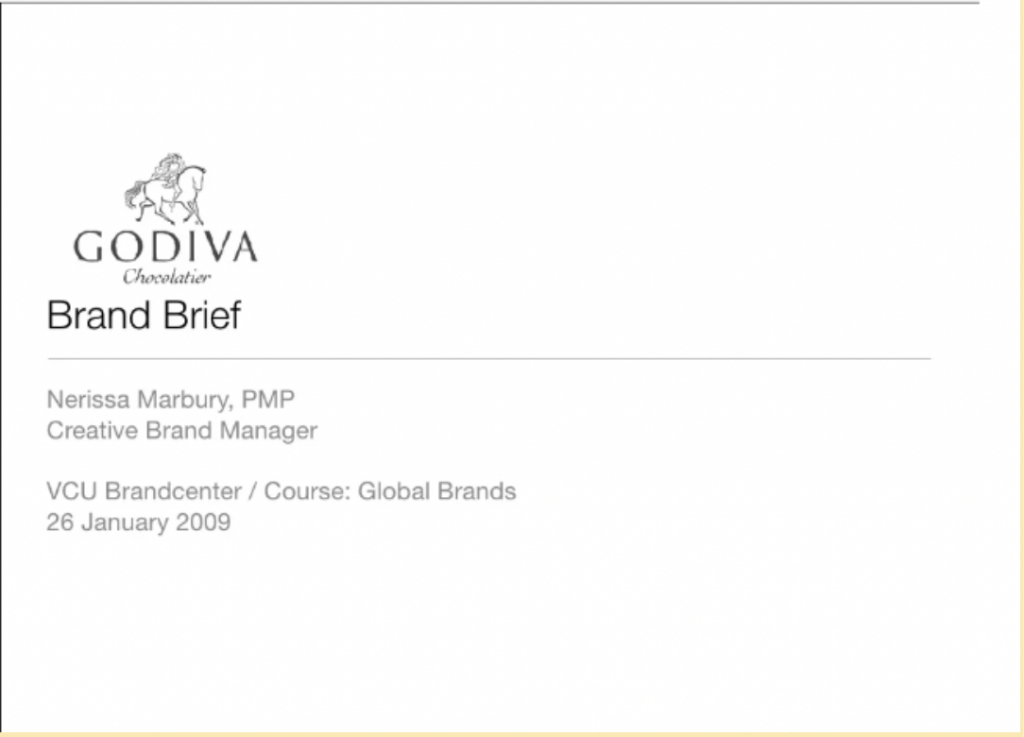
Source: Slideshare
Godiva’s brand brief is detailed and comprehensive.
It goes through the history of the company and gives an overview of the brand’s style, vision, values, and brand offering. More so, it gives an in-depth analysis of the chocolate industry and highlights previous marketing campaigns, competitors, as well as market opportunities.
This is a packed brief for branding, but in some cases, it might be the right fit. It all boils down to objectives and who will be reading it.
#3 Lego
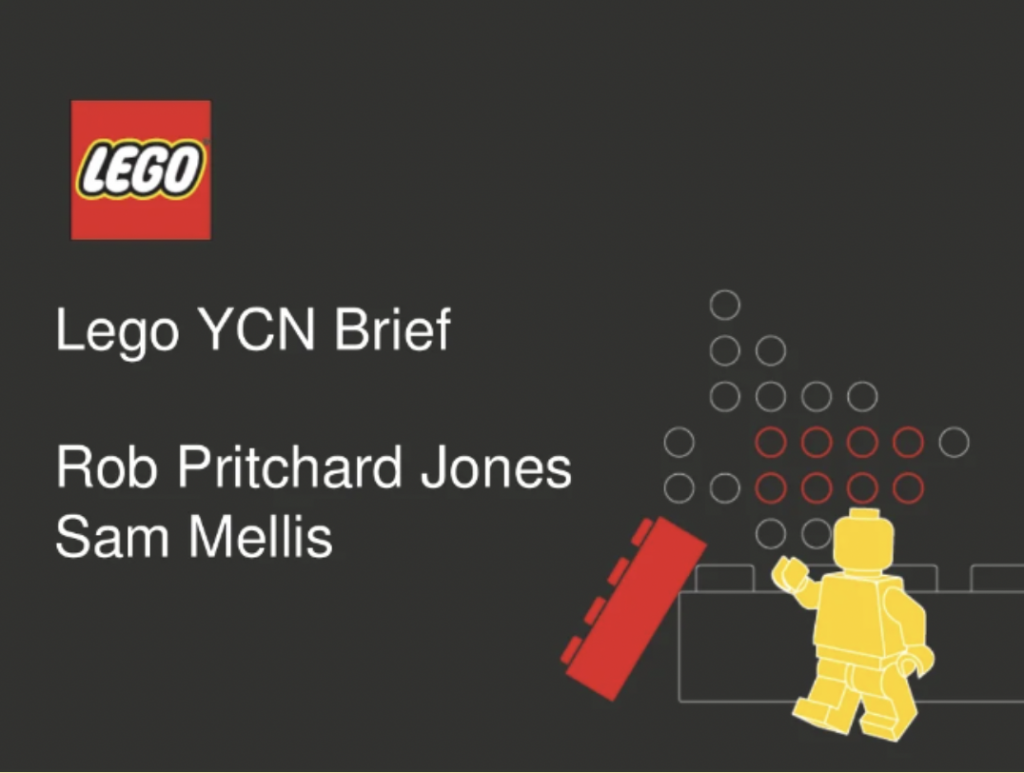
Source: Slideshare
This branding brief example for Lego uses only visuals to get the message across. While there’s no problem with that, as images tend to keep people interested, this brief can’t stand alone.
It lacks important information about the brand, such as more details about the target market, and competitors, as well as details about the brand’s style, imagery and values.
Without a clear understanding of the brand, designers or other collaborators can’t do their job properly.
We know. This is not exactly the best branding brief example. Yet we included it here so you can do a brainstorming exercise. How could this brief be improved? What would you do?
Try Out Xara’s Brand Brief Templates
So, what do you say? Ready to create a killer branding brief for your brand?
You don’t even have to spend hours on creating an appealing presentation because we’ve got you covered. Xara’s branding brief templates allow you to focus on other stuff, such as what information to include about your brand brief.
Leave the design work to us!
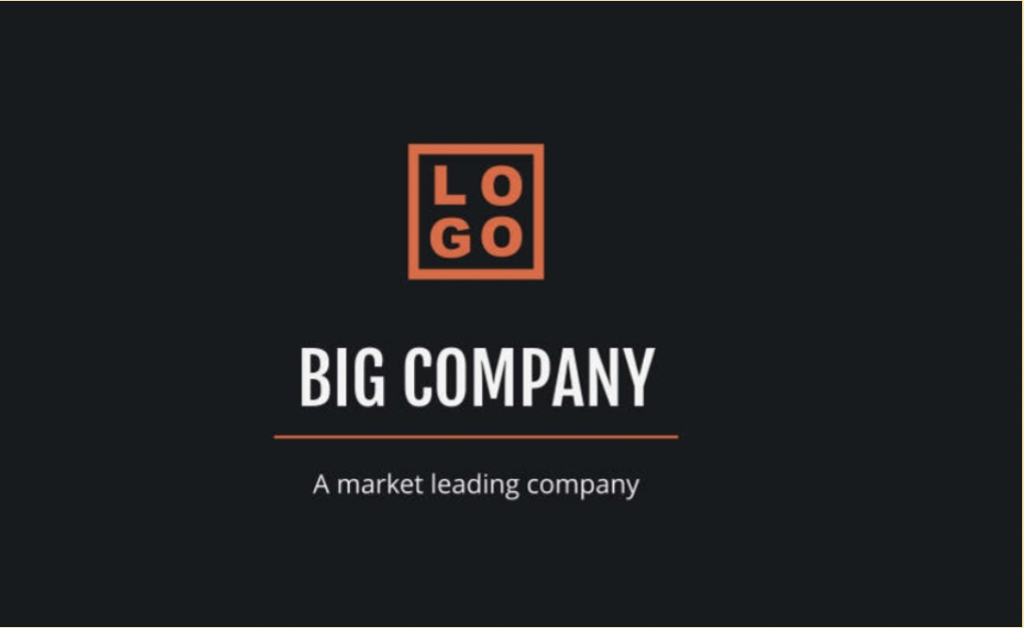
Source: Xara

Source: Xara

Source: Xara
With Xara, you can create a brief in minutes. With no design experience. Eager to give it a go?
Sign up today for a free trial
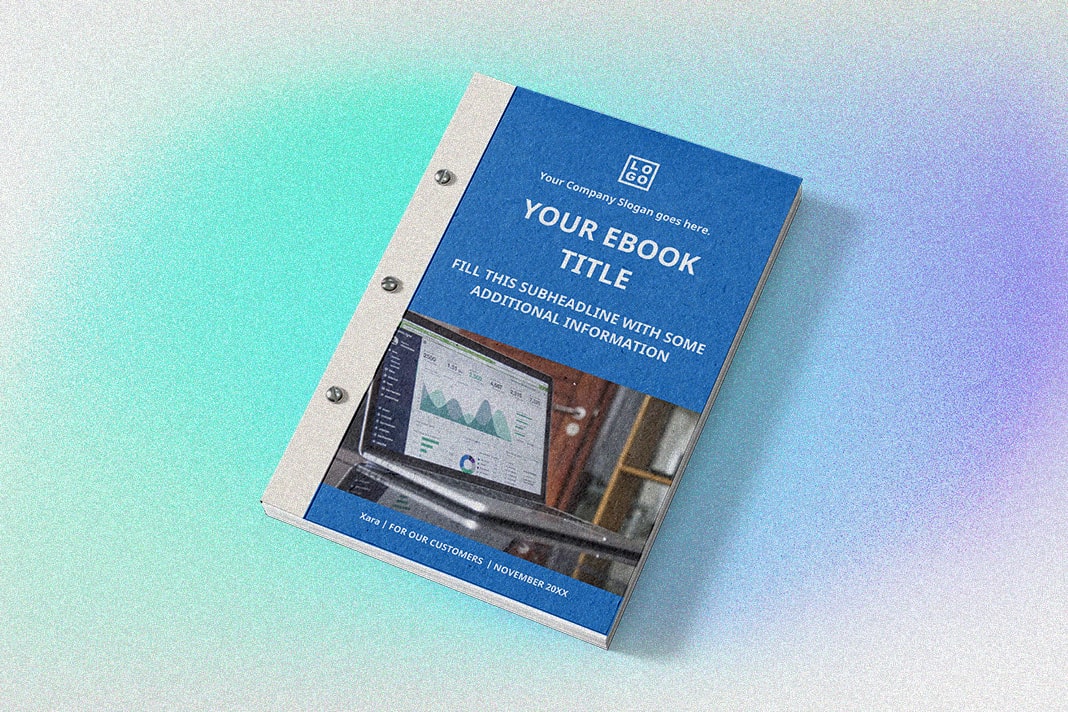

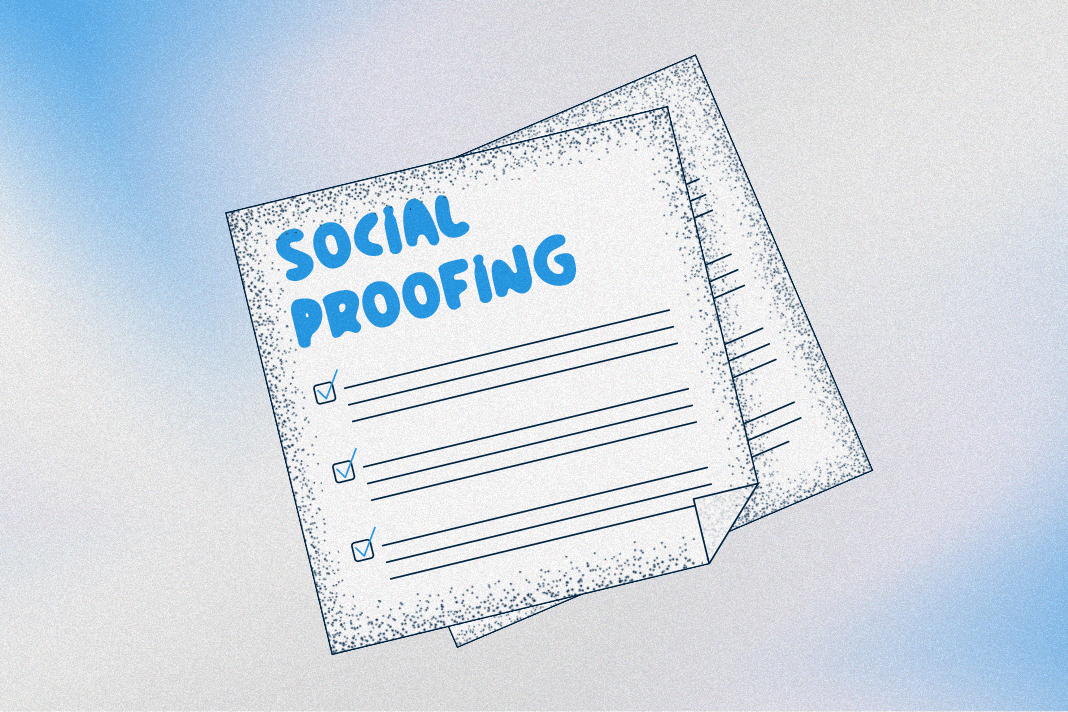
 No credit card or phone number required.
No credit card or phone number required.